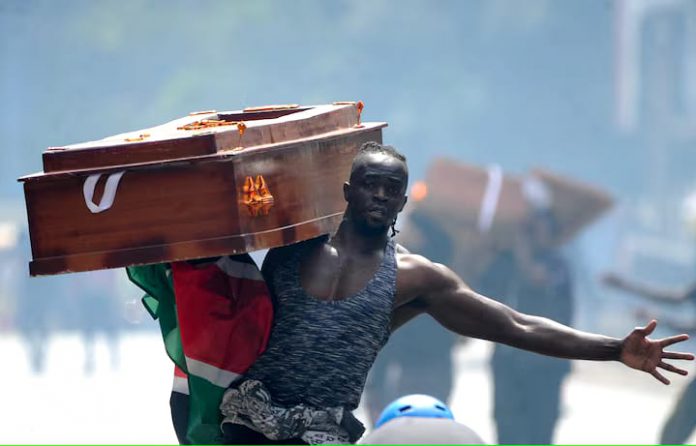Activists leading Kenya’s anti-government protests are reevaluating and strategizing their approach after Tuesday’s demonstrations were overshadowed by violence and looting.
They worry that these incidents could jeopardize the movement’s credibility and its efforts to pressure President William Ruto to resign.
They also claimed that the violence was instigated by “goons” hired by politicians to discredit the legitimate protestors or further their agendas.
Some activists have called on social media to cancel the next planned demonstration scheduled for Thursday (today).
Interior minister Kithure Kindiki on Tuesday said “criminals” were taking advantage of planned protests to “commit arson” and “terrorize” Kenyans.
He warned that they were planning more violence on Thursday and Sunday and said the government was determined to stop them at “whatever cost”.
Last week’s protests were deadly as police opened fire. The two weeks of protests have left 39 people dead, according to the Kenya National Human Rights Commission. Ruto on Sunday put that number at 19.
Recall that the president had offered to have a dialogue with Kenyan youth and has promised budget cuts on travel and hospitality for his office in line with some protesters’ demands.
As unemployment remains high and prices rise, there has been outrage over the luxurious lives of the president and other senior officials.
Members of the youthful but leaderless protest movement have said they do not trust the president to implement his new austerity plans.
Kenya’s main opposition party on Tuesday called on Ruto’s government to take responsibility for the deaths that occurred last week.
Economist Ken Gichinga told The Associated Press that the government should undertake a different approach to tax reforms that will allow the economy to thrive.
“The Gen Zs are the most affected by the unemployment,” Gichinga said.
The Kenya National Human Rights Commission chairperson Roseline Odede told journalists the protests were infiltrated and the “demographics had changed” and turned violent.












